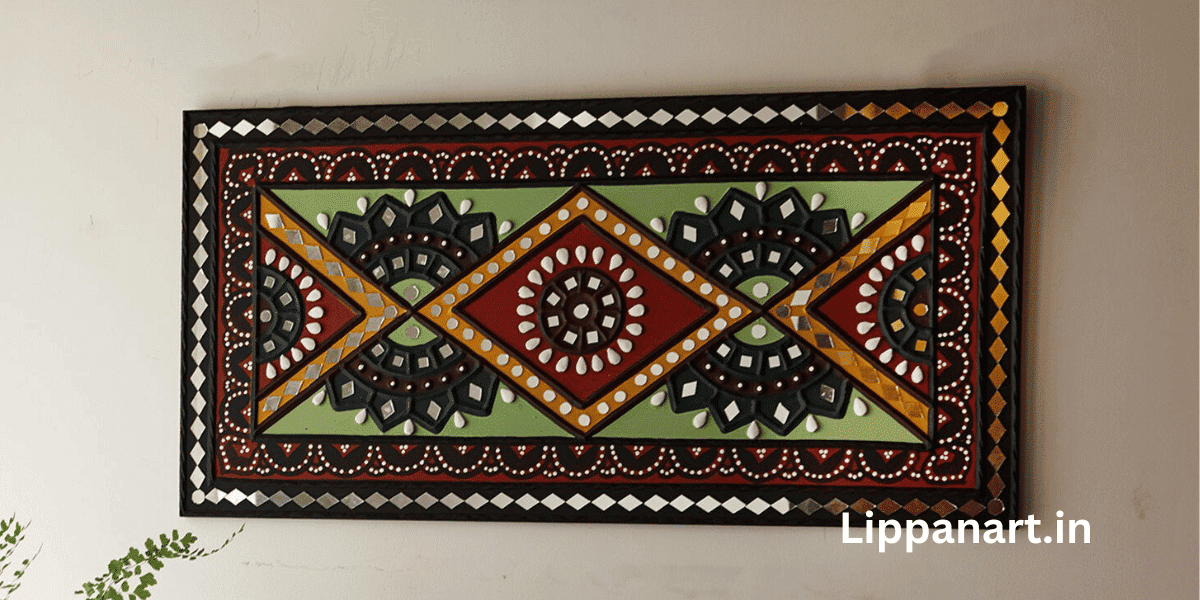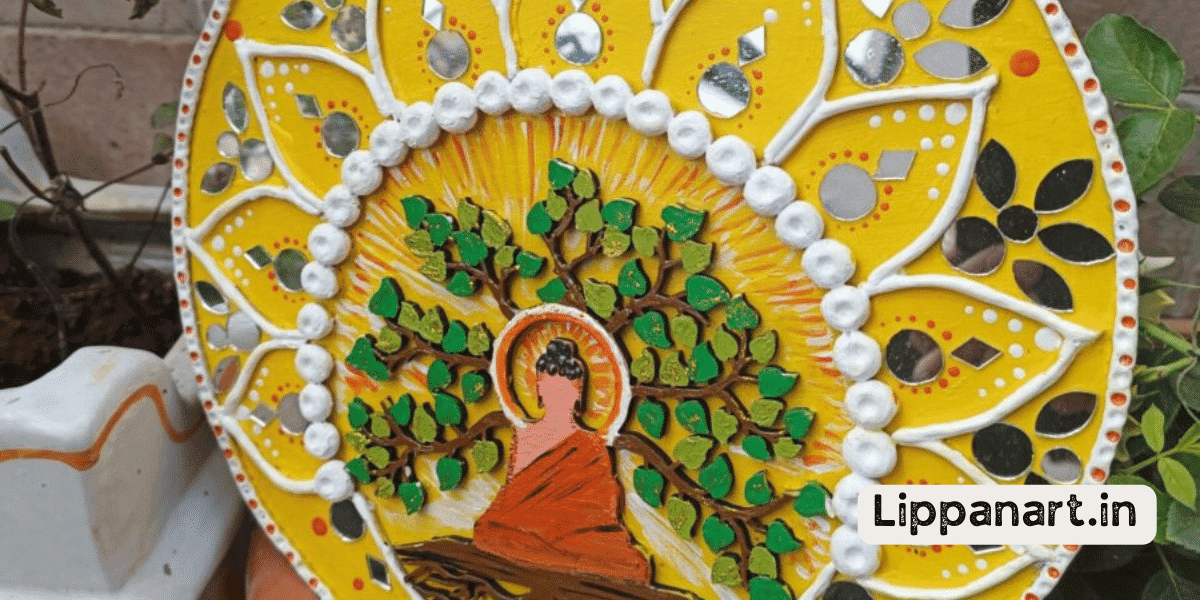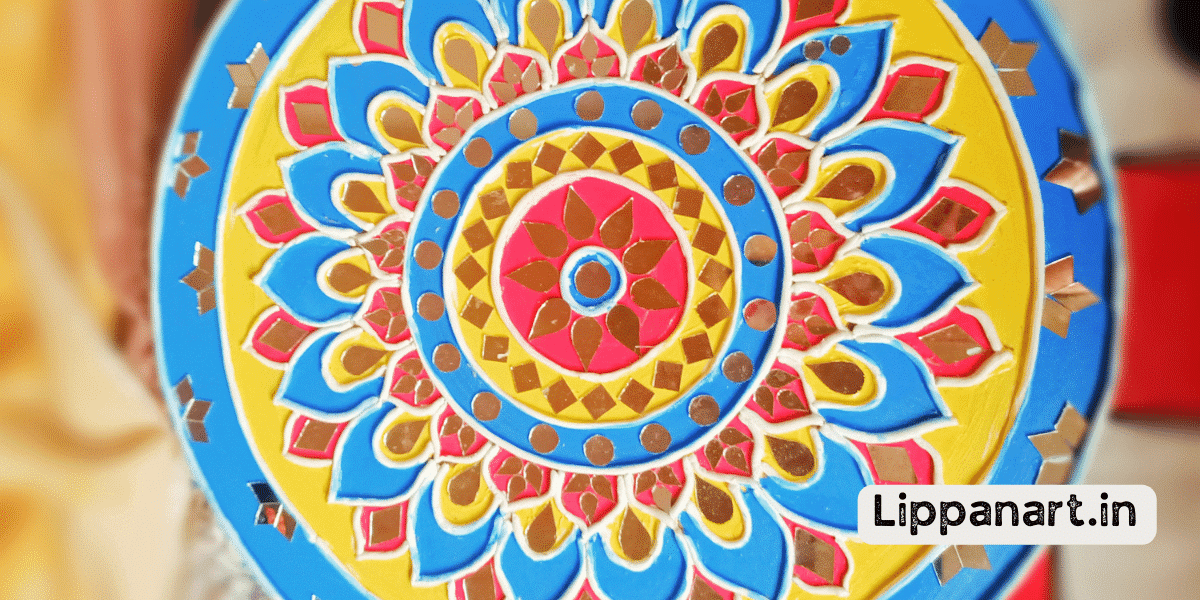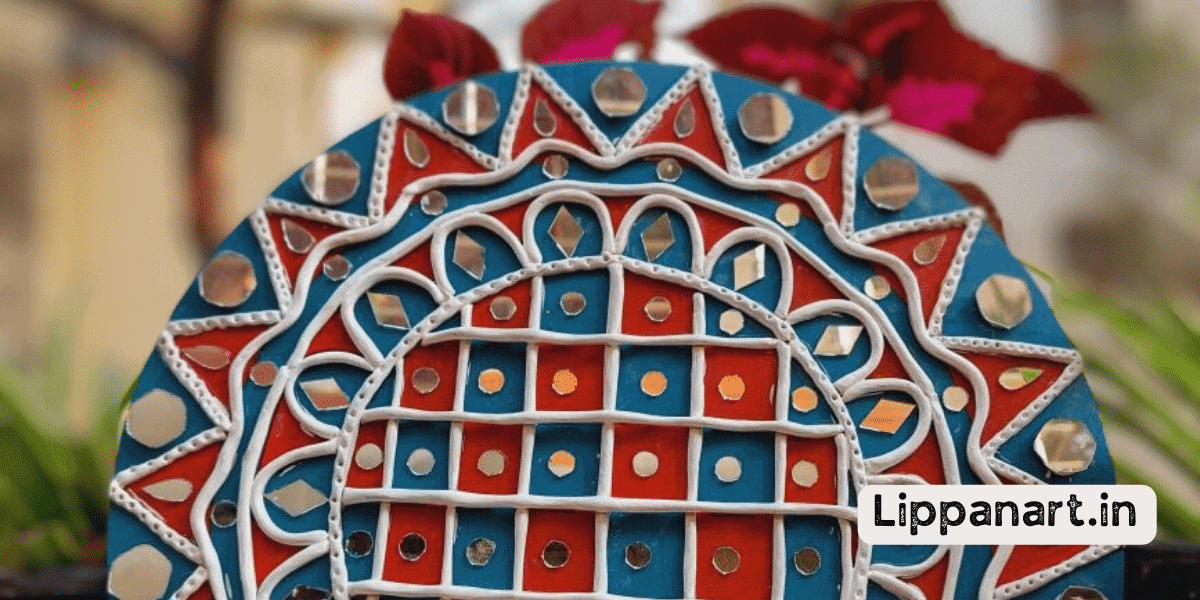Are you looking for an innovative way to beautify your home? Consider modern lippan art! It’s a unique and sustainable art form that dates back centuries and is still strong today.
With its intricate designs and bright colours, lippan art will brighten any room. This article will explore the history and techniques of modern lippan art and guide you step-by-step in creating your own piece!
Read more about this captivating art form and its global influence.
The Origins and History of Modern Lippan Art
Modern Lippan art originated in the Kutch region of India in the 19th century and has evolved into an innovative art form embraced worldwide. This traditional art is kept alive through pieces of clay, cow dung, and tools to create stunning works of art.
Lippan art is used for creating murals, wall décor, and even jewellery. The modern twist on traditional lippan art involves using natural minerals, such as mica, to create works of art that are both modern and captivating. Through these tools, artists can create visually stunning pieces of art that reflect the beauty and diversity of the Kutch region.
The modern lippan art movement has made the traditional art style more appreciated and accessible to a broader audience, making it a popular art form worldwide.
Exploring the Techniques and Materials Used in Modern Lippan Art
Exploring the techniques and materials used can give insight into this traditional form of Indian folk art.
Modern lippan art uses various materials, including acrylic paint, paintbrushes, and sculpting tools. These materials are used to create intricate designs on a mud or clay base, then decorated with shells, stones, and other decorative pieces.
Modern materials have allowed this art form to evolve and develop while still maintaining its traditional roots. Acrylic paint is used to create bold, vibrant colours, while the paint brushes help to create intricate patterns. Sculpting tools cut and shape mud or clay, allowing for more complex designs.
These materials combine to create a unique and beautiful piece of art that reflects the artist’s creative vision.
Step-by-Step Guide to Creating Your Own Modern Lippan Artwork
Creating your own modern artwork using the traditional lippan technique is easy with this step-by-step guide.
You’ll need clay, paints, and a few motifs to start. Here’s what to do:
- Prepare the clay: Knead it until it’s soft and malleable.
- Design your pattern: Choose a shape and create a design by pressing small clay pieces into it.
- Add colour: Use paints to bring your design to life.
- Finish: Bake the clay to harden it, then admire your work!
Follow these steps, and you’ll be creating modern lippan artwork with ease!
- Editor’s Choice
- Best Seller
- Amazon Choice
The Cultural Significance and Symbolism of Modern Lippan Art
By exploring its symbolism and cultural significance, you can gain a greater appreciation for this traditional art form.
Modern Lippan art is an art form where pieces of coloured cloth are pasted on walls with a mud mixture and embellished with intricate motifs. It is a highly revered form of folk art originating from India’s Kutch region.
The pieces are created using the lippan kaam technique and are said to bring good luck and prosperity. The materials and motifs used in the art form are said to carry deep symbolic meaning and represent Indian culture.
Each piece reflects a unique story, giving it an added significance level. With the help of modern Lippan art, you can delve into the captivating beauty of Indian culture and the abundance of its symbolism.
Innovative Designs and Patterns in Modern Lippan Art
Discovering innovative designs and patterns in traditional folk art can create a world of symbolism and cultural significance. Modern Lippan art is no exception. By exploring the various products used to create these works of art and the unique motifs and patterns that make up the finished product, one can better understand the tradition, symbolism, and culture often associated with modern lippan art.
From using dung to form intricate designs to finding innovative ways to incorporate traditional motifs, modern lippan art is a product of innovation and creativity. By looking at how the patterns are crafted and the symbolism behind them, one can gain a unique and exciting insight into the culture and history of modern lippan art.
How Modern Lippan Art is Evolving and Adapting to Contemporary Styles
You can see how traditional lippan art is evolving and adapting to contemporary styles in many creative ways. The possibilities are endless, from camel dung and lipan kaam to chalk powder and polymer clay.
Art has become more accessible as the materials are easier to access. Additionally, the designs are becoming more intricate and inventive.
As the clay art form becomes more popular, it adapts to different approaches and styles to create something unique. With this, modern lippan art is becoming a representation of individual expression and creativity.
Modern Lippan Art as a Sustainable and Eco-Friendly Art Form
Exploring lippan as a sustainable and eco-friendly art form, it’s clear to see how the materials used can positively impact the environment. The clay mixture used to create lippan artworks is typically made of natural materials such as sand, soil, limestone, and other organic substances. This mixture is then delivered to communities, often in reusable items, creating less waste and reducing pollution. This sustainable art-making approach also helps create economic opportunities for local artisans. Using natural materials and traditional techniques, modern lippan art is a perfect example of how innovation can bring about positive change.
- Editor’s Choice
- Best Seller
- Amazon Choice
Exploring the Global Influence and Popularity of Modern Lippan Art
You’re likely to see the global influence and popularity of this unique form of art in various places worldwide. Though mud relief work is an ancient art form, modern lippan art has grown in popularity due to its sustainability, eco-friendly nature, and potential for business growth.
- Concerted effort: Its popularity is due to the concerted effort of lippan art practitioners to promote the art form and the efforts of art galleries and museums to feature it in their collections.
- Clay Art: Mud relief work is a form of clay art used for centuries in India but has only recently been adopted by artists in other countries.
- Lippan Art Wall: The popularity of lippan art has also been fueled by the use of lippan art walls, which are used as decorative elements in homes and commercial spaces.
Modern lippan art is gaining global recognition and appreciation, becoming a form of art that can be used to innovate, create, and inspire.
Modern Lippan Art as a Form of Cultural Preservation and Revitalization
By promoting and preserving traditional mud relief work, lippan art is becoming a meaningful way to revitalize and celebrate culture. Chittar kaam, or lippan mirror art, is now seen in various contemporary lippan designs featuring intricate geometric and decorative motifs. Its ability to bridge the past and the present has made it a symbol of cultural pride for many communities.
Its vibrant colours, intricate patterns, and exaggerated designs can be seen in traditional and modern contexts. As an art form, many have embraced it as a way to honour and celebrate their heritage. Through lippan art, a deep connection to the past is maintained while simultaneously providing a platform for celebrating the culture’s unique characteristics.
Frequently Asked Questions
Where can I buy modern lippan art?
You can buy modern lippan art from a variety of online stores. Look for innovative artwork that will add a modern touch to your home. Research to find the best deal and quality. Keep up-to-date with the most current art trends to stay ahead of the curve.
How much does modern lippan art typically cost?
The cost of modern art can vary greatly, ranging from hundreds to millions of dollars. But, if you’re looking for an innovative piece of art, contemporary lippan art is an affordable option. Typically, you can find an exquisite work of art for a few hundred dollars, making it an accessible way to add colour and texture to your home.
What are the pros and cons of using modern lippan art in home decor?
The pros of using modern art in home decor include creating a unique, personalized look and being able to draw attention to specific areas. The cons need help finding pieces that fit the overall aesthetic and the potential for the art to appear dated quickly.
What are the best galleries or museums to view modern lippan art?
Check out the Museum of Contemporary Art in LA, the Denver Art Museum, or the SF Museum of Modern Art for amazing modern art collections and exhibits. Experience innovation and explore the latest trends in art with a visit to these galleries today.
Are there any famous artists working in modern lippan art?
You might be interested in exploring the work of the creative minds producing modern art forms. Several well-known artists use lippan art in their work, each pushing the boundaries of what art can be. Their innovative approach to art is sure to inspire your own creative ideas.

















